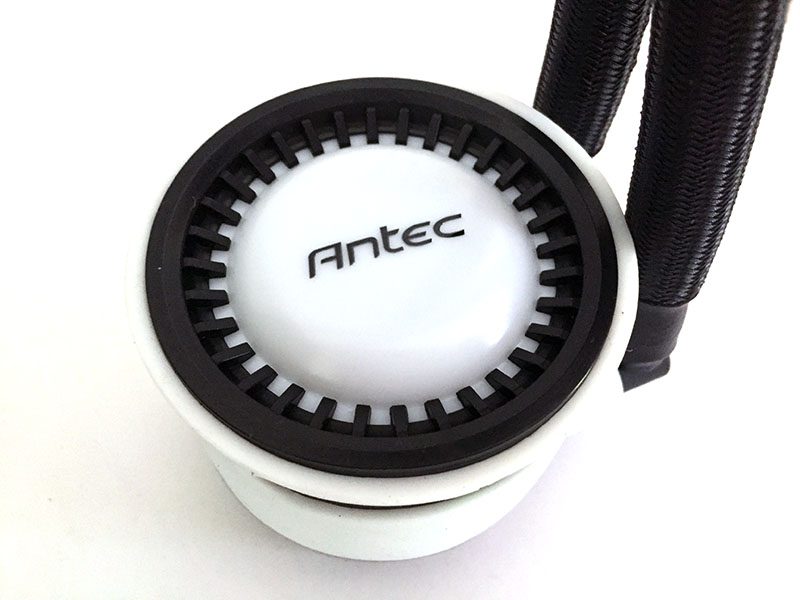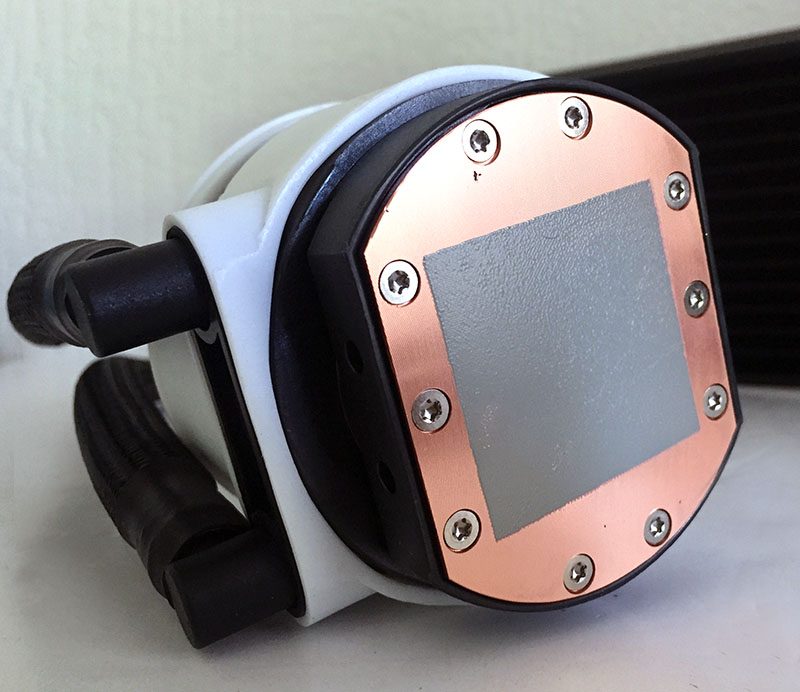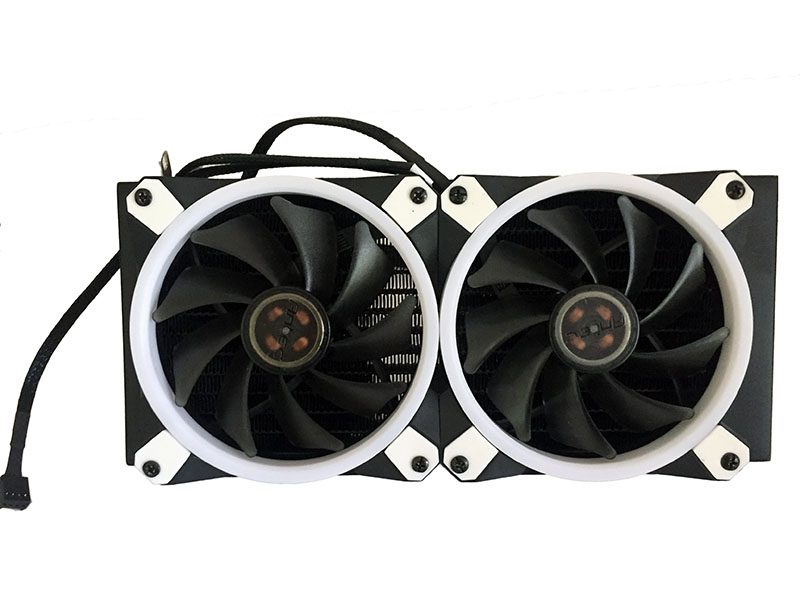Antec Mercury RGB 240 AIO CPU Cooler Review
Mike Sanders / 6 years ago
A Closer Look
The radiator and pump head, on the whole, do not look different than that we have seen in prior Antec products. The pump block has that almost trademarked white circular design while the radiator is a fair standard. At least in visual appearance. One of the first major differences you will note between this and prior Mercury coolers is that the hosepipe has lost the nasty plastic protective covering. It wasn’t nasty as in any technical problems, but it was far too rigid for its own good. The new Teflon coated protection should provide even better shielding while at the same time being a little more open to movement.
I can not stress enough just what a significant improvement this is on the prior design.

The pump block itself has remained largely the same with what we have seen in prior models. The white design with black trim and lettering really pull together what is, in my opinion, one of the most aesthetically pleasing designs out there. Even, I might add, when the LED/RGB isn’t turned on.

The power input to the pump block operated with a USB style input which can be powered from either a SATA power output or directly from a USB port on your motherboard. Both options are nice and the cable when inserted feels nice and secure.

Cooling Plate
Another notable change from prior designs is that the Antec Mercury RGB 240 now comes with pre-applied thermal paste. This is the first time that we have seen this done to an Antec product and clearly shows that some effort has been put into making this more accessible to users. Particularly those who don’t like the application side of fitting a cooler.

The contact plate size and design appear to be that we’re more than familiar with on Antec products. The brackets fit well and although the screwing in can be a little fiddly, they have provided 2 slight recesses to help hold the screw in place for you. While the mounting bracket itself could be more user friendly, it wasn’t overly difficult either.

Fan and Radiator
The fans to the cooler are largely the same as we have seen before. The exterior again has the excellent white trim which is nothing more than an aesthetic point, but still one worth noting regardless. The trim on the screw points remain and there is cushioning there to reduce or eliminate any potential vibration.
Once fitted to the radiator, the fans look very impressive and as can be seen in the photograph, whether deliberate or accidental, they do blend into the radiator itself really well. This helps to accentuate the white trim and should look even better when the RGB lighting is in full flow.
RGB/LED lighting
As with the older Mercury models, Antec has included the color-coded temperature indication as an option. This is, however, an alternative if you would prefer something a little more informative when compared to the full-blown RGB lighting effects. As before this operated by being blue if less than 35C, green if between 36C-40C and red if over 40C.

If you prefer more of a light show, then a plethora of RGB options are available. These can be combined with any syncronized compatible motherboard, although a manual controller is provided if necessary. The color range isn’t particularly impressive, but the cycle displays can be very appealing. Particularly when fan speed rotation is mixed up to provide some extra style.
Of course, RGB lighting isn’t for everyone and that was a factor that made the original Mercury coolers so impressive. With this though, Antec has made some smart decisions. Instead of making it a mandatory new feature, they have retained the color temperature indication feature. As I mentioned before in prior Mercury reviews, I would prefer that the temperature range color indications could be altered. Going red above 40C seems a bit excessive to me and could potentially ring alarm bells for anyone not familiar with normal operating temperatures.
Despite this though, I do both approve and like the new RGB options that have been added. Now, however, comes the critical point, have any of the changes had an impact on the performance and noise levels?




















